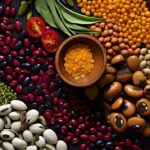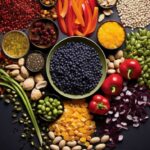Historical Use of Chia Seeds
Chia Seeds in Grocery Store

Guess what we stumbled upon? A fantastic fact: chia seeds burst with goodness and have turned into a must-have in kitchens everywhere. Now, the big question – where do you snag these small but mighty heroes at your local supermarket?
In this article, we’ll explore the nutritional benefits of chia seeds, highlight popular brands and varieties, and share tips for buying and storing them. Plus, we’ll give you creative ideas on how to incorporate chia seeds into your recipes.
Let’s dive in and uncover the wonders of chia seeds together!
Key Takeaways
- Chia seeds can be found in the health food section or the baking aisle of the grocery store.
- Look for reputable brands that offer organic, non-GMO chia seeds.
- Store chia seeds in an airtight container in a cool, dry place to maintain freshness.
- Chia seeds can be used in a variety of dishes and as a substitute for eggs in baking.
Nutritional Benefits of Chia Seeds
While chia seeds may be commonly found in grocery stores, it’s important to explore the nutritional benefits they offer.
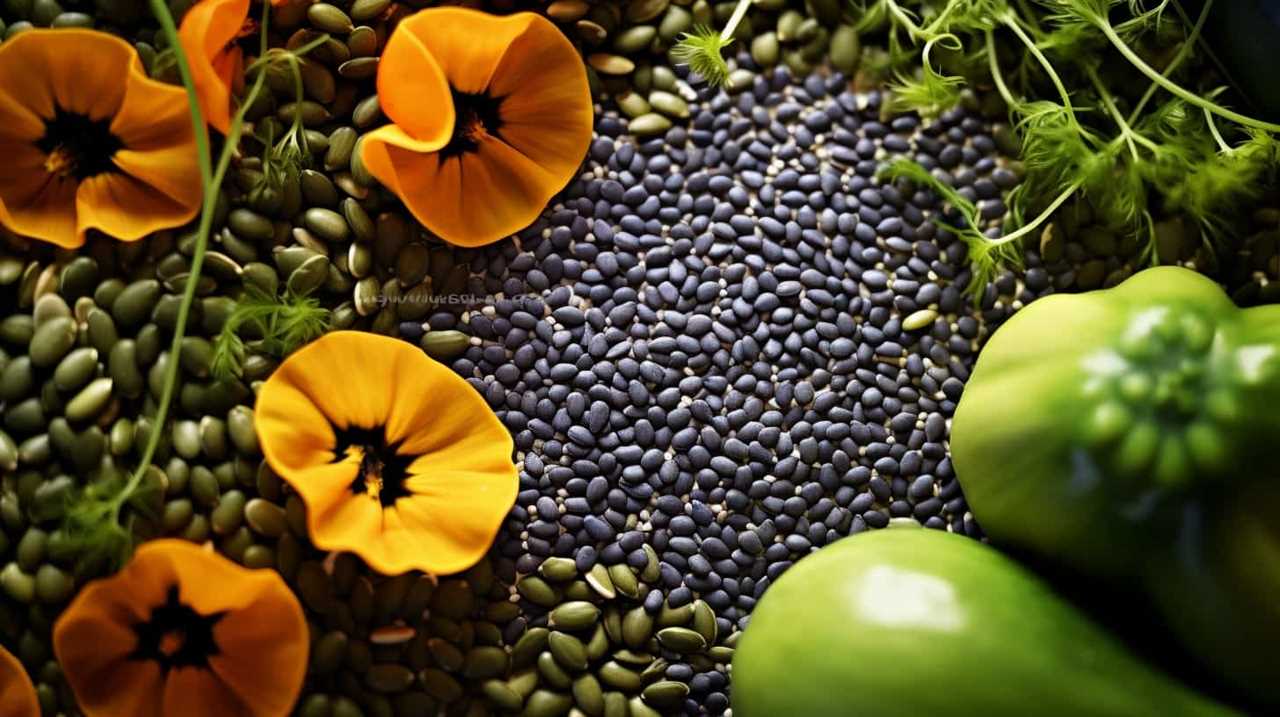
Chia seeds aren’t only versatile in chia seed recipes, but they also provide numerous health benefits. These tiny seeds are packed with nutrients, such as fiber, protein, omega-3 fatty acids, and antioxidants.
The high fiber content of chia seeds can aid in digestion and promote feelings of fullness, making them a great addition to a weight loss diet. Additionally, chia seeds contain alpha-linolenic acid (ALA), a type of omega-3 fatty acid that has been linked to reducing inflammation and improving heart health.
Furthermore, the antioxidants found in chia seeds can help protect against cell damage and contribute to overall well-being.
Transitioning into the subsequent section about popular brands and varieties of chia seeds, it’s important to consider these nutritional benefits when making a choice.

Popular Brands and Varieties of Chia Seeds
In our search for chia seeds in the grocery store, we discovered a variety of popular brands and varieties available. Some of the well-known brands include Bob’s Red Mill, Nutiva, Navitas Organics, and Healthworks. These brands offer both black and white chia seeds, giving consumers options to choose from.
When it comes to chia seed recipes, the possibilities are endless. Chia seeds can be used in a variety of dishes, such as puddings, smoothies, oatmeal, and baked goods. They can also be added to yogurt, salads, and even used as an egg substitute in vegan baking. Chia seed smoothies are particularly popular, providing a nutritious and filling option for breakfast or as a snack.
Now that we know about the popular brands and varieties, let’s explore where exactly we can find chia seeds in the grocery store.
Where to Find Chia Seeds in the Grocery Store
Now let’s explore where exactly we can locate chia seeds within the grocery store.

Chia seeds are typically found in the health food section or the baking aisle. In the health food section, they may be located near other seeds, grains, and nuts. Look for them in clear, airtight packages or bulk bins.
In the baking aisle, chia seeds can be found alongside other baking ingredients such as flour and sugar. Some grocery stores may also have a separate section dedicated to organic products, where you may find chia seeds as well.
It’s important to note that chia seeds are versatile and can be used in various recipes beyond cooking, such as in skincare products. So, if you’re looking for chia seeds for cooking or skincare purposes, be sure to check these sections in your grocery store.
Tips for Buying and Storing Chia Seeds
Let’s explore some helpful tips for buying and storing chia seeds.
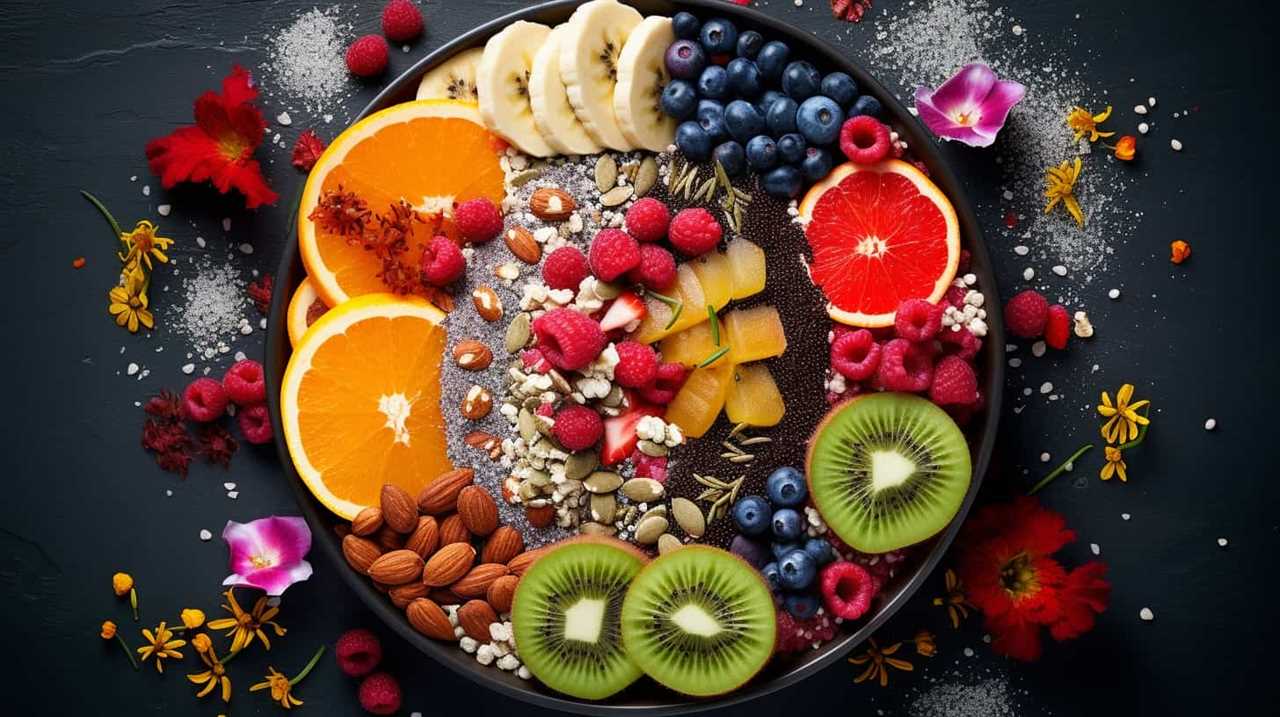
When it comes to buying chia seeds, it’s important to choose a reputable brand that offers high-quality seeds. Look for organic, non-GMO options to ensure you’re getting the best possible product. Additionally, check the expiration date on the package to ensure freshness.
When it comes to storing chia seeds, it’s best to keep them in an airtight container in a cool, dry place. This will help to preserve their nutritional value and prevent them from going rancid. Avoid storing them in direct sunlight or near heat sources, as this can degrade the quality of the seeds.
By following these buying and storage tips, you can ensure that your chia seeds remain fresh and ready to use.
Now, let’s take a look at some creative ways to incorporate chia seeds into your recipes.

Creative Ways to Use Chia Seeds in Your Recipes
We love discovering new ways to incorporate chia seeds into our recipes. Chia seeds are a versatile ingredient that can add a nutritional boost to a variety of dishes.
One popular way to use chia seeds is by making chia seed pudding. Simply mix chia seeds with your choice of liquid, such as almond milk or coconut milk, and let it sit overnight. The chia seeds will absorb the liquid and create a creamy, pudding-like texture. You can also add flavors like vanilla or cocoa powder to enhance the taste.
Another delicious option is to add chia seeds to smoothies. Just blend your favorite fruits and vegetables with chia seeds for added fiber and omega-3 fatty acids.
Chia seeds can be a great addition to your recipes, providing both nutrition and texture.
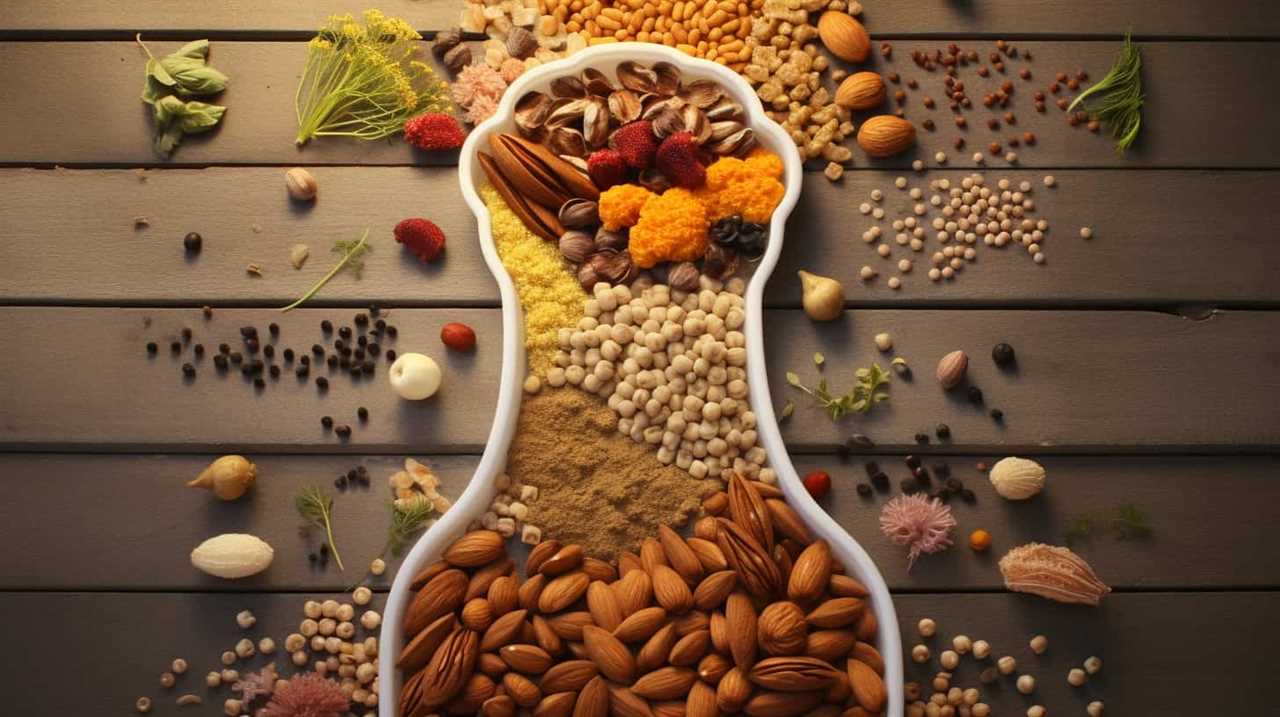
Frequently Asked Questions
Are Chia Seeds Safe for People With Nut Allergies?
Chia seeds are generally safe for people with nut allergies. However, there is a potential risk of cross-contamination, so it’s important to check the packaging for any warnings or allergen information.
Can Chia Seeds Be Used as a Substitute for Eggs in Baking Recipes?
Using chia seeds for vegan baking has become popular due to their ability to serve as a substitute for eggs in recipes. The benefits of using chia seeds in baking include adding moisture, texture, and nutritional value to your creations.
What Is the Recommended Daily Intake of Chia Seeds for Adults?
The recommended daily intake of chia seeds for adults varies, but generally, 1-2 tablespoons is a good starting point. Chia seeds can be incorporated into various recipes and offer numerous health benefits.
Can Chia Seeds Help With Weight Loss?
Chia seeds can contribute to weight loss due to their high fiber and protein content, which helps increase satiety. Incorporate them into your diet by adding them to smoothies, yogurt, or using them as an egg substitute in baking.
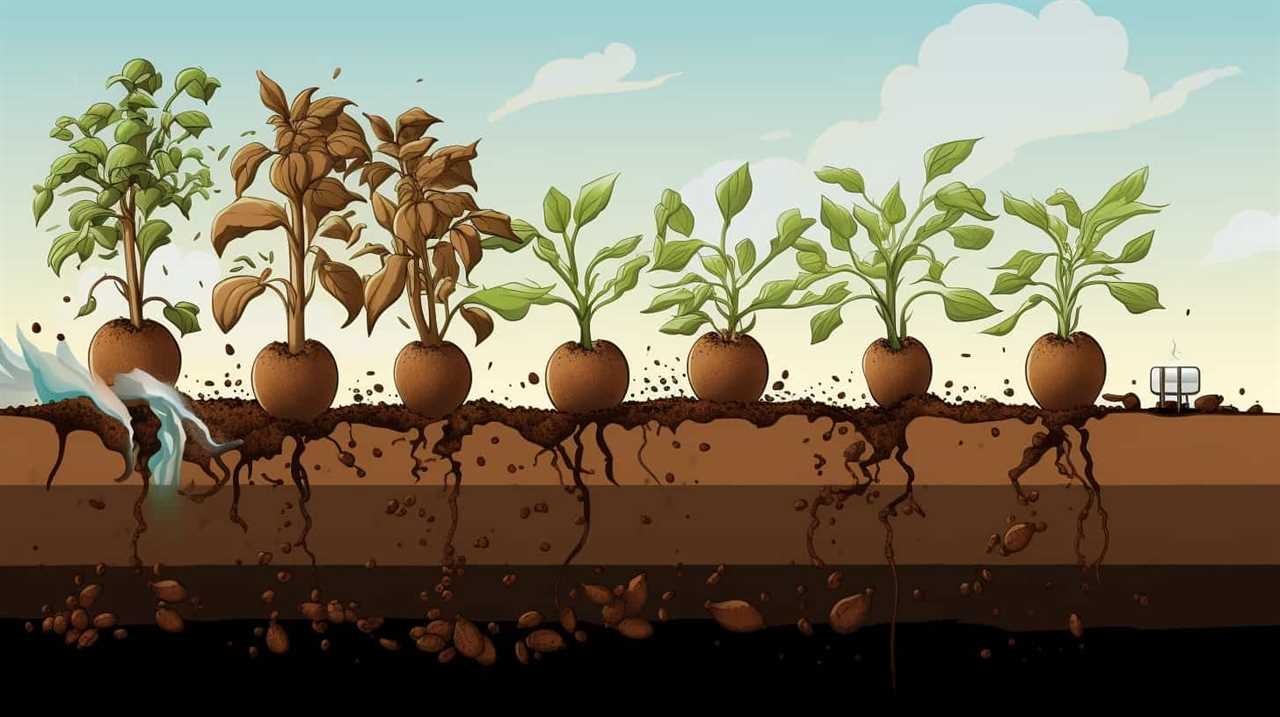
Are Chia Seeds Suitable for a Gluten-Free Diet?
Chia seeds are suitable for a gluten-free diet. They can be a great addition to your diet, offering numerous benefits. Incorporating chia seeds into your meals can provide you with a variety of chia seed recipes and their health benefits.
Conclusion
In conclusion, chia seeds are an incredibly nutritious addition to any diet. Packed with fiber, protein, and omega-3 fatty acids, they offer numerous health benefits.
Interestingly, a study found that consuming chia seeds can help lower blood pressure in individuals with hypertension.
With their versatility and wide availability in grocery stores, incorporating chia seeds into your meals is a simple and delicious way to boost your overall well-being.
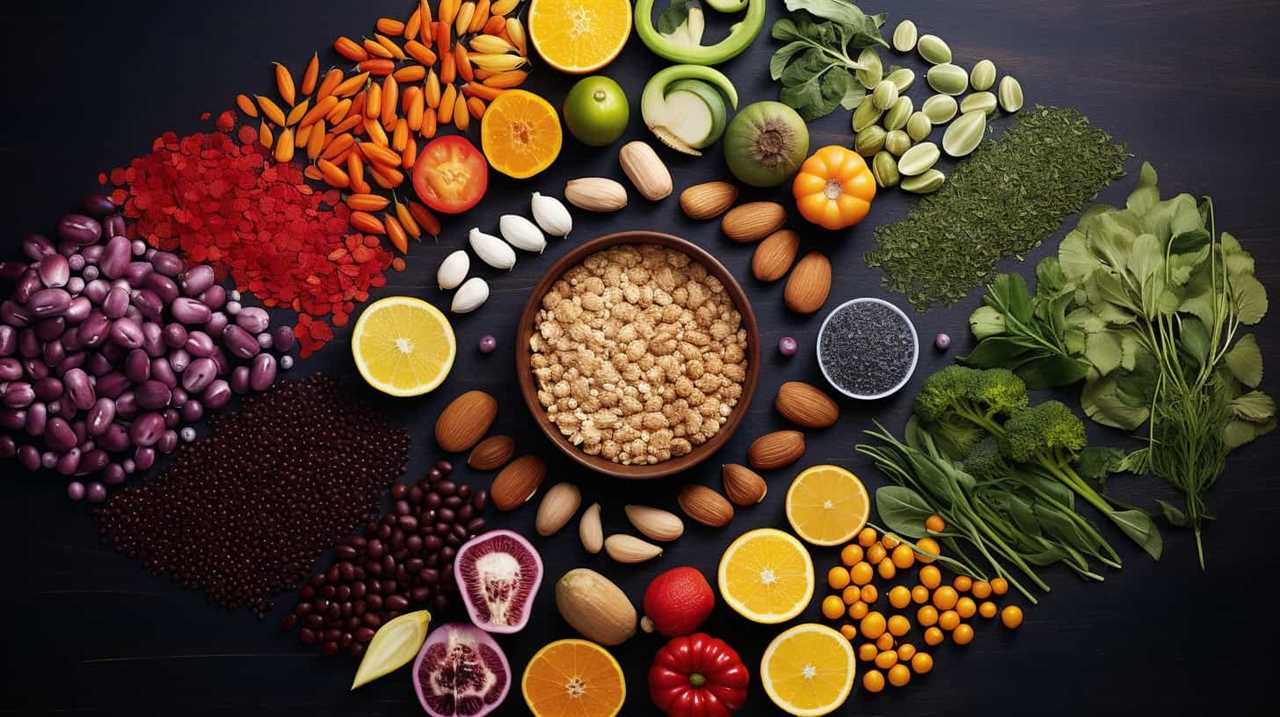
Hi, I’m Sarah. I write for Turtle Tree Seeds, a news blog that loves food – all kinds of food. But especially bacon, chocolate, and veggies. We’re on a mission to show the world that you can enjoy all of those things, even kale and brussels sprouts. Because we believe that when it comes to food, there’s no such thing as guilty pleasures. Just pleasures.
I’m also a huge fan of puns (obviously).
Historical Use of Chia Seeds
Oldies But Goodies: Ancestors Crunching on Super-Seeds
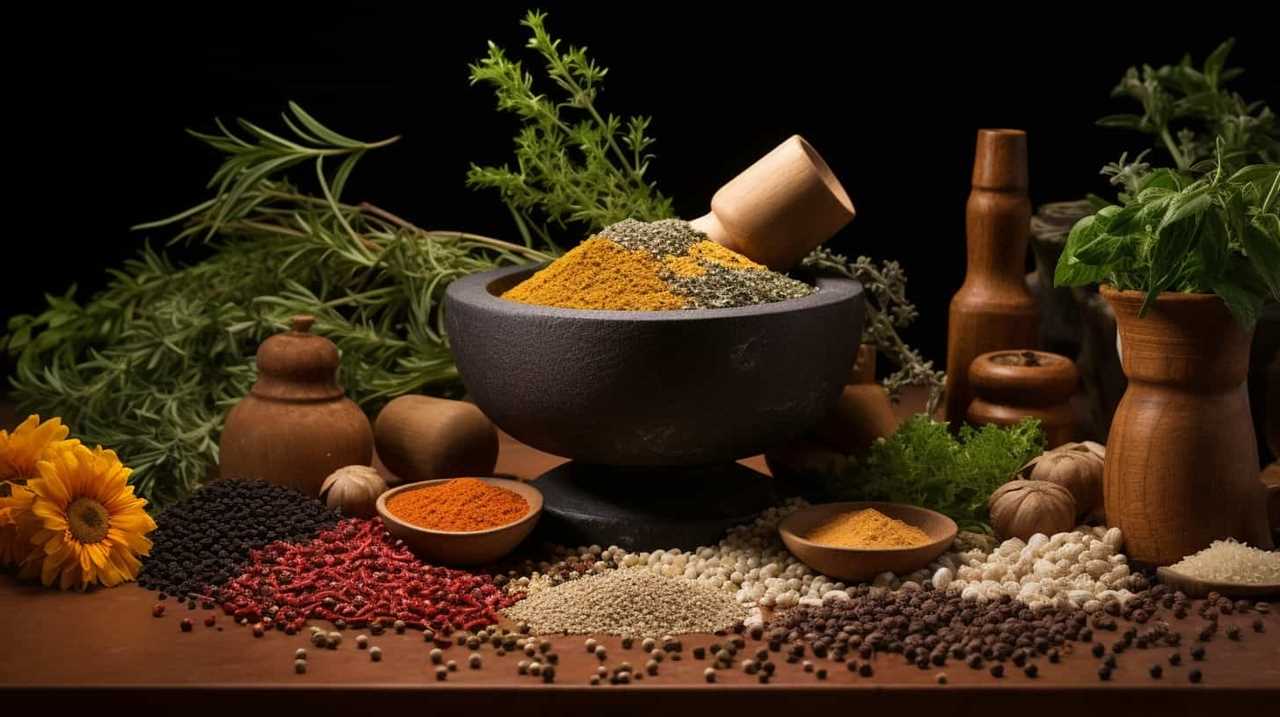

We stumbled upon a fascinating diet revelation from our ancestors – they indulged in super-seeds! Particularly, chia seeds. These tiny yet powerful seeds were not just a passing trend; they were a crucial component of their ancient diet. Curious to learn more about this ancient superfood? Dive in to uncover the secrets of chia seeds and how they can benefit you today. Keep reading to discover the wonders of this tiny powerhouse!
In fact, historical records show that ancient civilizations incorporated chia seeds into their diets. Join us on a journey to explore the significance of chia seeds and tap into the ancestral wisdom that has stood the test of time.
Key Takeaways
- Ancient civilizations recognized the health benefits of chia seeds and incorporated them into their diets.
- Chia seeds are packed with nutrients like fiber, protein, and omega-3 fatty acids, promoting heart health and reducing inflammation.
- Other types of super-seeds like flaxseeds, hemp seeds, pumpkin seeds, and sunflower seeds also offer various health benefits.
- When incorporating super-seeds into the diet, it is important to start with small amounts, store them properly, and be aware of any allergies or precautions.
Ancient Civilizations Incorporating Chia Seeds
In our exploration of ancient civilizations, we discover that the incorporation of chia seeds was a common practice. Even though chia seeds have gained popularity in modern cuisine, their use dates back thousands of years.
Ancient civilizations, such as the Aztecs and Mayans, recognized the health benefits of chia seeds in the present day. These small, yet mighty, seeds are packed with nutrients, including fiber, protein, and omega-3 fatty acids. They also contain antioxidants, which can help reduce inflammation and promote heart health.
Chia seeds have been shown to aid in weight loss by promoting feelings of fullness and reducing cravings. Additionally, they can regulate blood sugar levels, improve digestion, and support bone health.
Incorporating chia seeds into our diet today can provide us with a wealth of health benefits.
Chia Seeds in the Diets of Early Cultures
As we delve into the diets of early cultures, we continue to witness the widespread inclusion of chia seeds, a practice that underscores their enduring significance. Chia seeds weren’t only a staple in the diets of ancient civilizations, but they also provided numerous nutritional benefits. These super-seeds were packed with essential nutrients such as omega-3 fatty acids, fiber, protein, and antioxidants.
The early cultures recognized the importance of these nutrients for their overall health and well-being. In addition to their nutritional value, chia seeds were also utilized in various culinary ways by ancient civilizations. They were commonly incorporated into breads, porridges, and beverages, adding a unique texture and flavor to these traditional dishes.
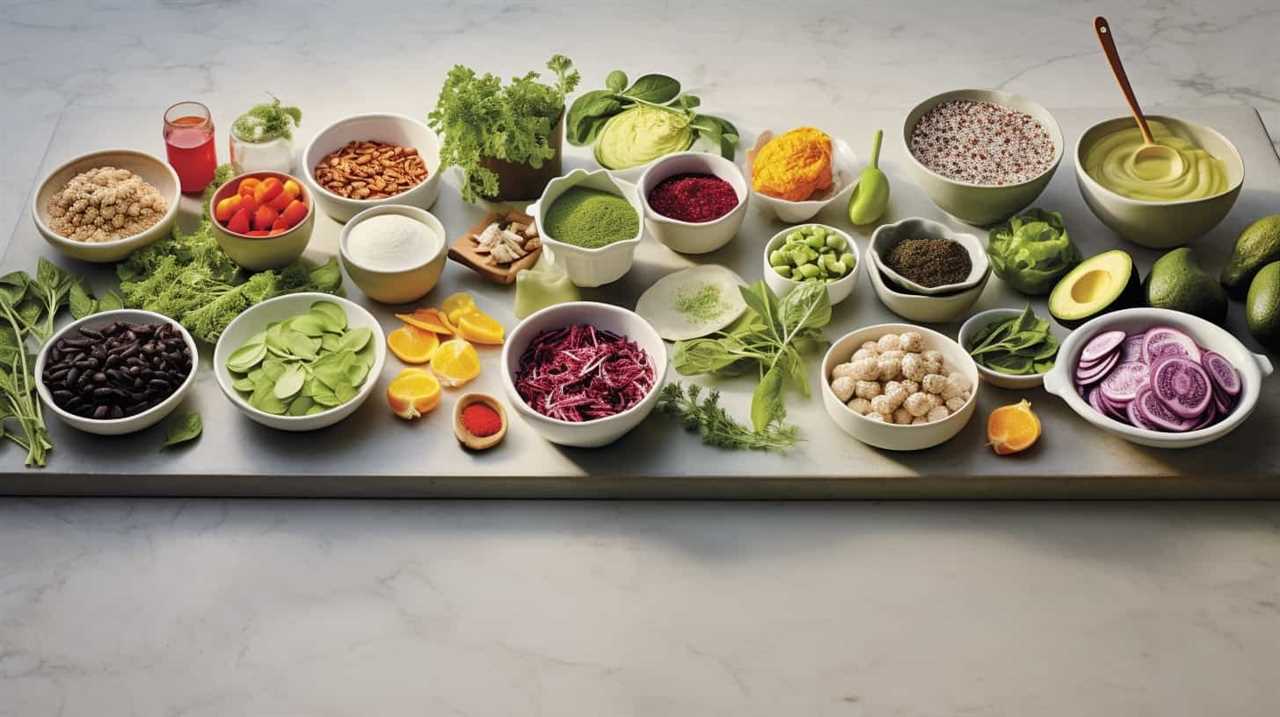
The versatility and nutritional benefits of chia seeds made them a valuable and indispensable ingredient in the diets of early cultures.
Historical Use of Chia Seeds by Ancestors
Continuing our exploration of the diets of early cultures, we can see that our ancestors made extensive use of chia seeds, recognizing their valuable nutritional properties.
The prehistoric use of chia seeds can be traced back to ancient civilizations such as the Mayans and Aztecs. These cultures understood the cultural importance of chia seeds and incorporated them into their daily diets.
Chia seeds were highly regarded for their ability to provide sustained energy, as they’re rich in fiber, protein, and healthy fats. They were also valued for their high levels of omega-3 fatty acids, antioxidants, and minerals.

The ancestors recognized the versatility of chia seeds, using them not only as a food source but also for medicinal purposes.
As we delve deeper into the history of chia seeds, we’ll discover how they became a staple food in ancient times.
Chia Seeds as a Staple Food in Ancient Times
Our ancestors relied on chia seeds as a staple food in ancient times, recognizing their immense nutritional value. Chia seeds have been cultivated and consumed for centuries, and ancient civilizations understood their importance in maintaining a healthy diet. These tiny seeds were not only versatile in ancient chia recipes, but they also provided numerous health benefits. Let’s take a closer look at the nutritional profile of chia seeds:
| Nutrient | Amount per 100g |
|---|---|
| Fiber | 34g |
| Protein | 17g |
| Omega-3 fatty acids | 18g |
| Calcium | 631mg |
Chia seeds were a rich source of fiber, protein, and omega-3 fatty acids, making them an excellent addition to any diet. Consuming chia seeds helped our ancestors maintain regular bowel movements, support muscle growth, and promote heart health. Additionally, these nutrient-dense seeds were also a great source of calcium, aiding in bone strength and development. Incorporating chia seeds into our modern diets can provide us with the same health benefits that our ancestors enjoyed.

Ancestral Wisdom: the Significance of Chia Seeds
Why did our ancestors value chia seeds for their immense nutritional benefits? Chia seeds have been consumed for centuries due to their significant health benefits. Here are four reasons why chia seeds hold such significance in modern diets:
- High in Omega-3 Fatty Acids: Chia seeds are a rich source of omega-3 fatty acids, which are essential for brain health, reducing inflammation, and supporting heart health.
- Fiber Powerhouse: Chia seeds are packed with fiber, promoting digestive health, regulating blood sugar levels, and aiding in weight management.
- Antioxidant Boost: Chia seeds are loaded with antioxidants, protecting our cells from damage caused by free radicals and reducing the risk of chronic diseases.
- Nutrient-Dense: Chia seeds provide a wide range of essential vitamins and minerals, including calcium, magnesium, and phosphorus, supporting overall well-being.
Incorporating chia seeds into our diets can contribute to optimal health and well-being, making them a valuable addition to our modern lifestyles.
Frequently Asked Questions
Are There Any Modern Cultures That Still Incorporate Chia Seeds Into Their Diets?
Yes, there are modern cultures that still incorporate chia seeds into their diets. They are used in various culinary ways, and traditional chia seed recipes can be found in different cultures around the world.
How Were Chia Seeds Prepared and Consumed by Ancient Civilizations?
Chia seed preparation techniques varied among ancient civilizations. They were consumed as a staple food due to their high nutritional value. Ancient cultures ground chia seeds into flour, mixed them with water or other liquids, and baked them into bread or porridge.

Were There Any Specific Health Benefits Associated With Consuming Chia Seeds in Ancient Times?
In ancient times, consuming chia seeds provided our ancestors with a plethora of health benefits. The seeds were used for their ancient medicinal uses and were highly valued for their exceptional nutritional composition.
What Other Types of Seeds Were Commonly Consumed by Ancestral Cultures?
Ancient seed consumption: A look into the diverse diets of our ancestors. Forgotten super seeds: Exploring the lesser known seeds consumed by ancestral cultures. We found that besides chia seeds, ancestral cultures commonly consumed flax seeds, hemp seeds, and pumpkin seeds for their nutritional benefits.
Can Chia Seeds Be Used in Modern Cooking and Baking Recipes?
Yes, chia seeds can definitely be used in modern cooking and baking recipes. They are versatile and can be incorporated into various dishes, such as chia seed pudding recipes and chia seed energy bars.
Conclusion
In conclusion, the historical evidence strongly supports the notion that chia seeds were a vital part of the diets and cultures of ancient civilizations. From the Mayans to the Aztecs, chia seeds were incorporated into their everyday meals, providing a rich source of nutrients and energy.

The wisdom of our ancestors in recognizing the significance of these super-seeds can’t be understated. Today, as we rediscover the nutritional value of chia seeds, we can appreciate the wisdom of the past and incorporate these ancient treasures into our own diets.
Hi, I’m Sarah. I write for Turtle Tree Seeds, a news blog that loves food – all kinds of food. But especially bacon, chocolate, and veggies. We’re on a mission to show the world that you can enjoy all of those things, even kale and brussels sprouts. Because we believe that when it comes to food, there’s no such thing as guilty pleasures. Just pleasures.
I’m also a huge fan of puns (obviously).
Historical Use of Chia Seeds
3 Best Ancient Nutritional Uses of Salvia Hispanica
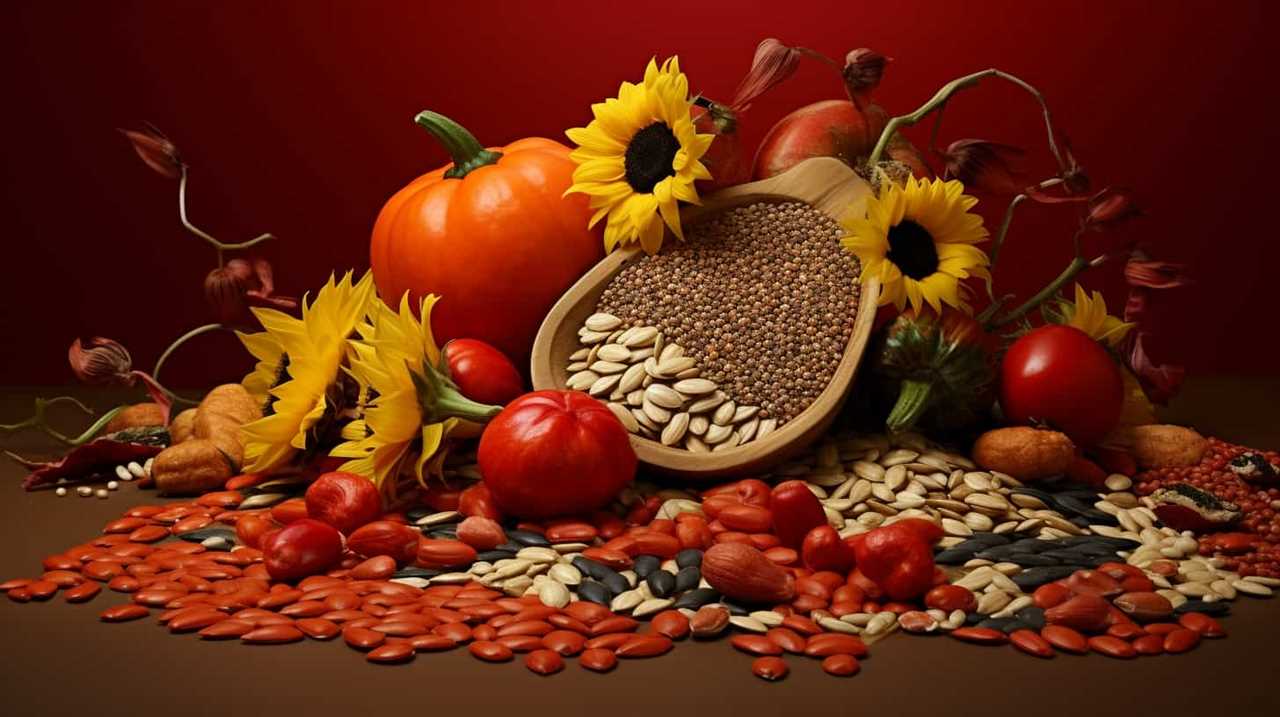
Are you curious about the fascinating historical uses of Salvia hispanica in diets? No need to worry, we have all the information you are looking for!
In this article, we’ll take you on a journey through time, exploring the fascinating ways this remarkable plant was utilized by ancient civilizations.
From the Mayans who revered it as a sacred food source to the Aztecs who valued its immense nutritional benefits, we’ll uncover the secrets of Salvia hispanica and its traditional medicinal applications.
Get ready to be amazed by the power of nature!
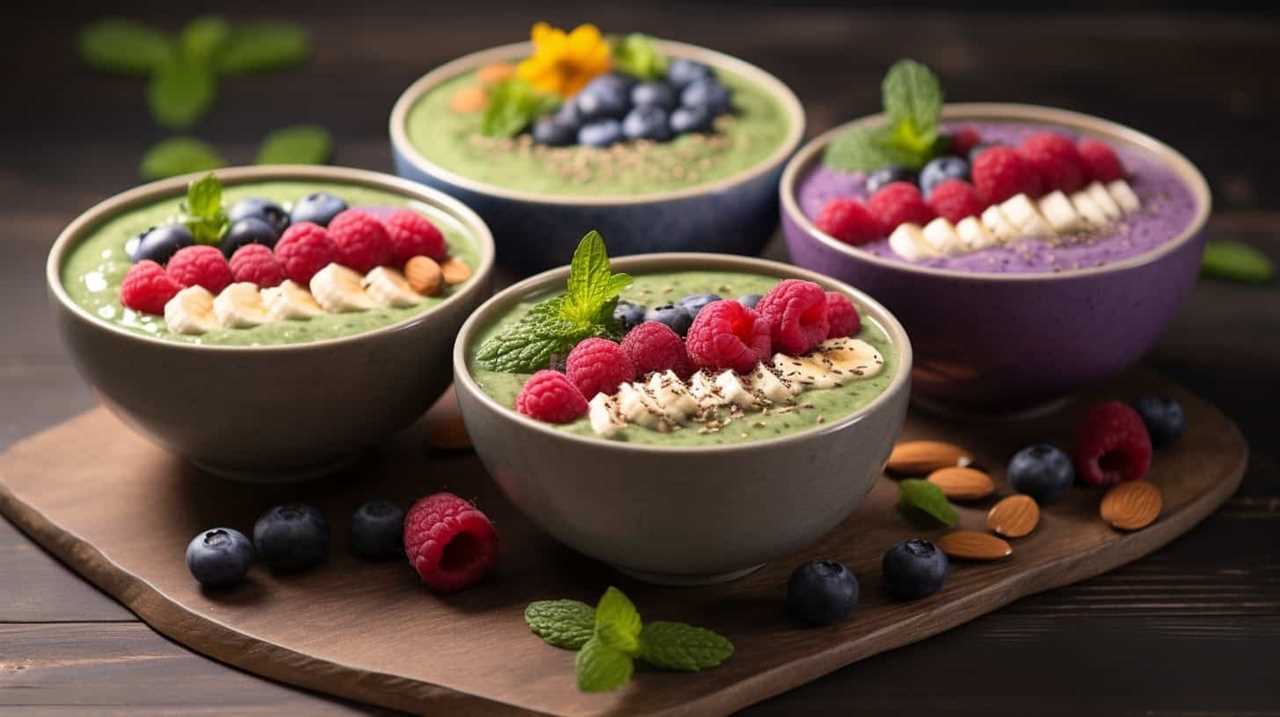
Key Takeaways
- Mayans and Aztecs cultivated and used chia seeds as a vital food source, currency, and for medicinal purposes.
- Chia seeds are rich in omega-3 fatty acids, protein, fiber, antioxidants, vitamins, and minerals, providing numerous nutritional benefits.
- Chia seeds have traditional medicinal applications such as relieving joint pain and arthritis, aiding in digestion, promoting sustained energy, and supporting the immune system.
- Chia seeds were used in ancient remedies for various ailments, including joint pain, inflammation, wound healing, and soothing skin irritations.
Ancient Use in Mayan Civilization
In exploring the ancient use of Salvia Hispanica in the Mayan Civilization, we discover its remarkable significance as a versatile and nourishing staple. The Mayans, known for their advanced agricultural practices, cultivated chia seeds as a vital food source. They understood the nutritional value of chia seeds and incorporated them into their daily diet.
Ancient farming practices played a crucial role in the cultivation of Salvia Hispanica, as the Mayans utilized sophisticated irrigation systems and terraced fields to maximize crop production.
The cultural significance of chia seeds extended beyond their nutritional benefits. They were used in religious ceremonies and were believed to possess spiritual properties. Chia seeds were also used as currency, highlighting their importance in Mayan society.
The Mayans recognized the value of Salvia Hispanica, not only as a nourishing staple but also as a symbol of their agricultural prowess and cultural heritage.
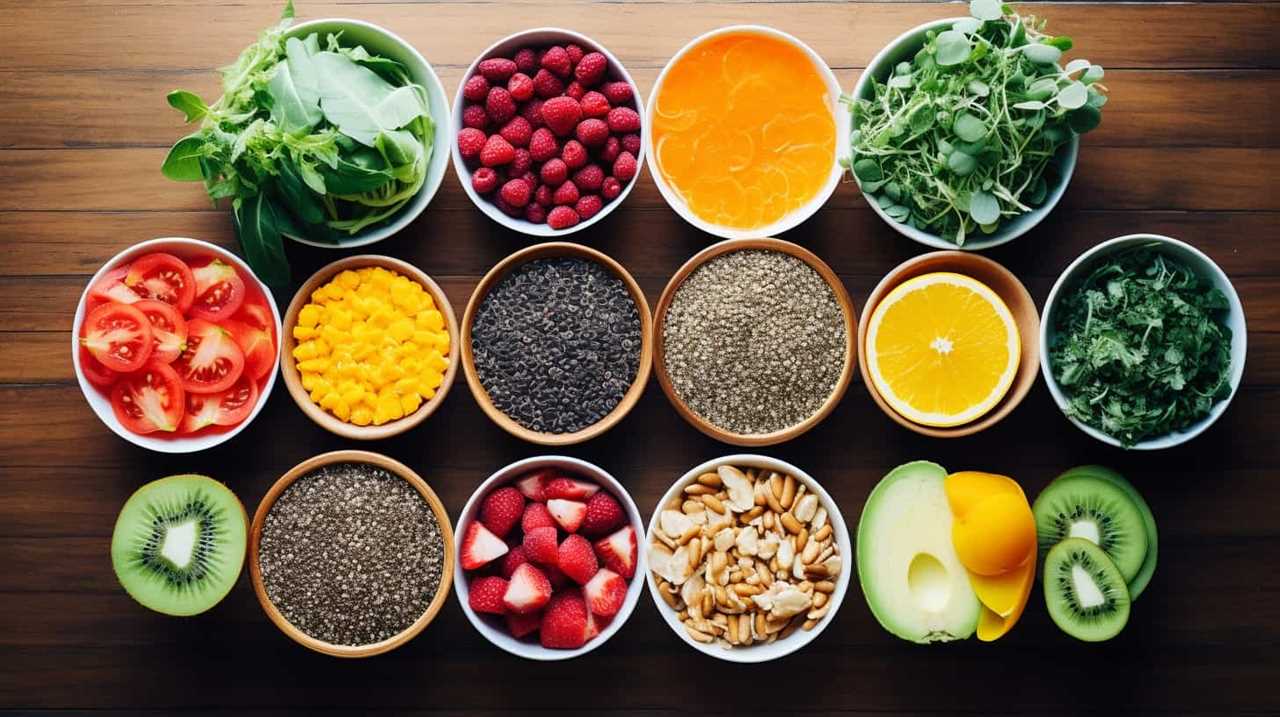
Nutritional Benefits in Aztec Culture
Continuing our exploration of the ancient use of Salvia Hispanica, we delve into the nutritional benefits that chia seeds provided in Aztec culture.
Chia seeds were a staple in the Aztec diet and played a crucial role in their overall health and well-being. The Aztecs recognized the high nutritional value of chia seeds, which were rich in omega-3 fatty acids, protein, fiber, antioxidants, and various vitamins and minerals.
These seeds weren’t only consumed as a source of sustenance but also used for medicinal purposes, aiding in digestion and providing energy. Today, chia seeds have gained popularity in modern cuisine due to their nutritional benefits, and they’re widely used in smoothies, puddings, and baked goods.
Incorporating chia seeds into our diets can provide us with similar nutritional benefits as the Aztecs enjoyed centuries ago.

Traditional Medicinal Applications
Chia seeds have been utilized for centuries in traditional medicine for their numerous health benefits and were valued for their ability to improve digestion, boost energy, and promote overall well-being.
Here are some traditional medicinal applications of chia seeds:
- Ancient remedies: Chia seeds were used by ancient civilizations as a remedy for various ailments. They were believed to have anti-inflammatory properties and were used to alleviate joint pain and arthritis.
- Digestive health: Chia seeds contain a high amount of dietary fiber, which aids in digestion and promotes regular bowel movements. They were often consumed to relieve constipation and promote a healthy digestive system.
- Energy booster: Chia seeds are rich in omega-3 fatty acids, protein, and carbohydrates, making them a great source of sustained energy. They were consumed by warriors and athletes to enhance endurance and stamina.
- Healing properties: Chia seeds were used topically to promote wound healing and soothe skin irritations. They were also used internally to support the immune system and promote overall healing in the body.
Frequently Asked Questions
How Was Salvia Hispanica Used in Ancient Egyptian Civilization?
Salvia Hispanica, or chia seeds, were used in ancient Egyptian civilization for their medicinal properties and spiritual significance. They were believed to have healing powers and were often used in religious ceremonies.
Can Salvia Hispanica Seeds Be Used as a Natural Food Coloring?
Yes, Salvia hispanica seeds can be used as a natural food coloring. Although some may argue that artificial food coloring is more vibrant, using Salvia hispanica seeds provides numerous benefits, such as being rich in antioxidants and adding a natural touch to dishes.
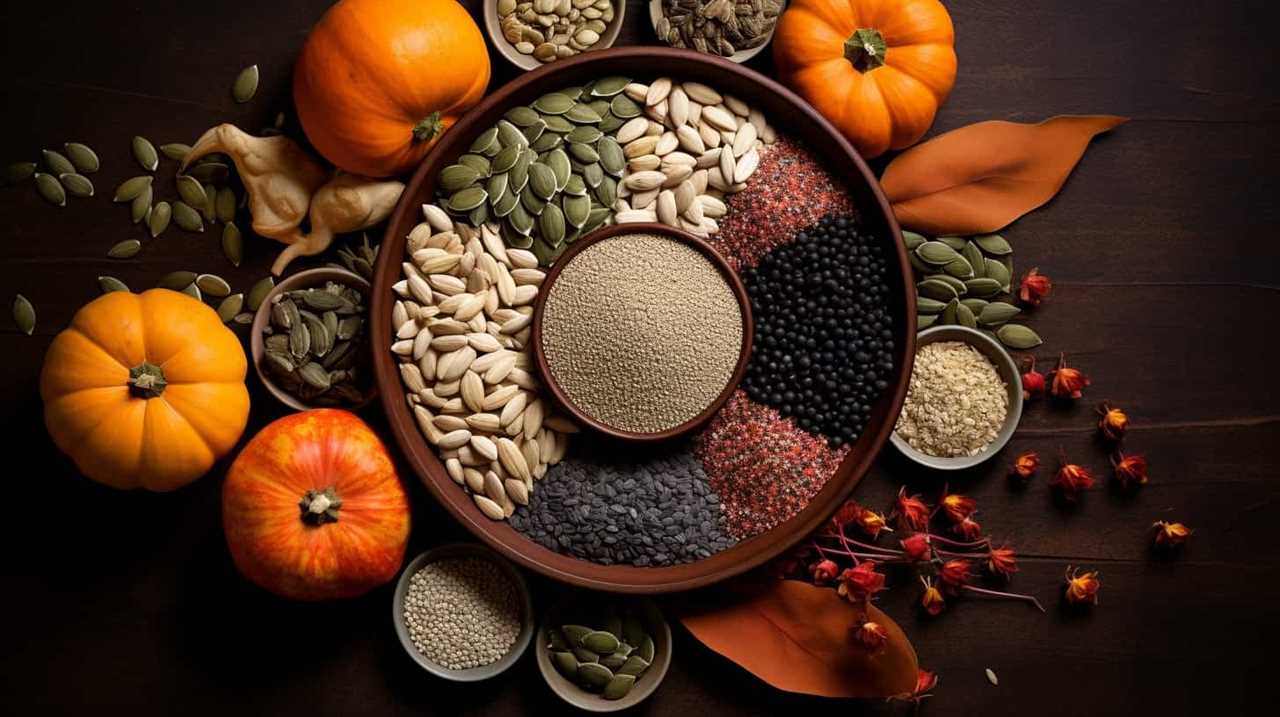
What Are the Modern Culinary Uses of Salvia Hispanica?
Modern culinary trends using salvia hispanica include incorporating the seeds into smoothie bowls, salads, and baked goods. Unique cooking techniques with salvia hispanica involve using it as a vegan egg substitute or making a chia seed pudding.
Are There Any Potential Side Effects or Risks Associated With Consuming Salvia Hispanica?
There are potential side effects and risks associated with consuming salvia hispanica, such as digestive issues and allergic reactions. It is important to be aware of these before incorporating it into our diet.
How Does Salvia Hispanica Compare to Other Ancient Superfoods in Terms of Nutritional Value?
In comparing salvia hispanica to other ancient superfoods, it is important to consider its nutritional value. Salvia hispanica offers numerous benefits for overall health, making it a valuable addition to any diet.
Conclusion
In conclusion, the ancient uses of Salvia hispanica, also known as chia seeds, are like hidden treasures waiting to be discovered. Just as Mayan and Aztec civilizations valued this nutritious superfood for its health benefits and medicinal properties, we too can embrace its power.
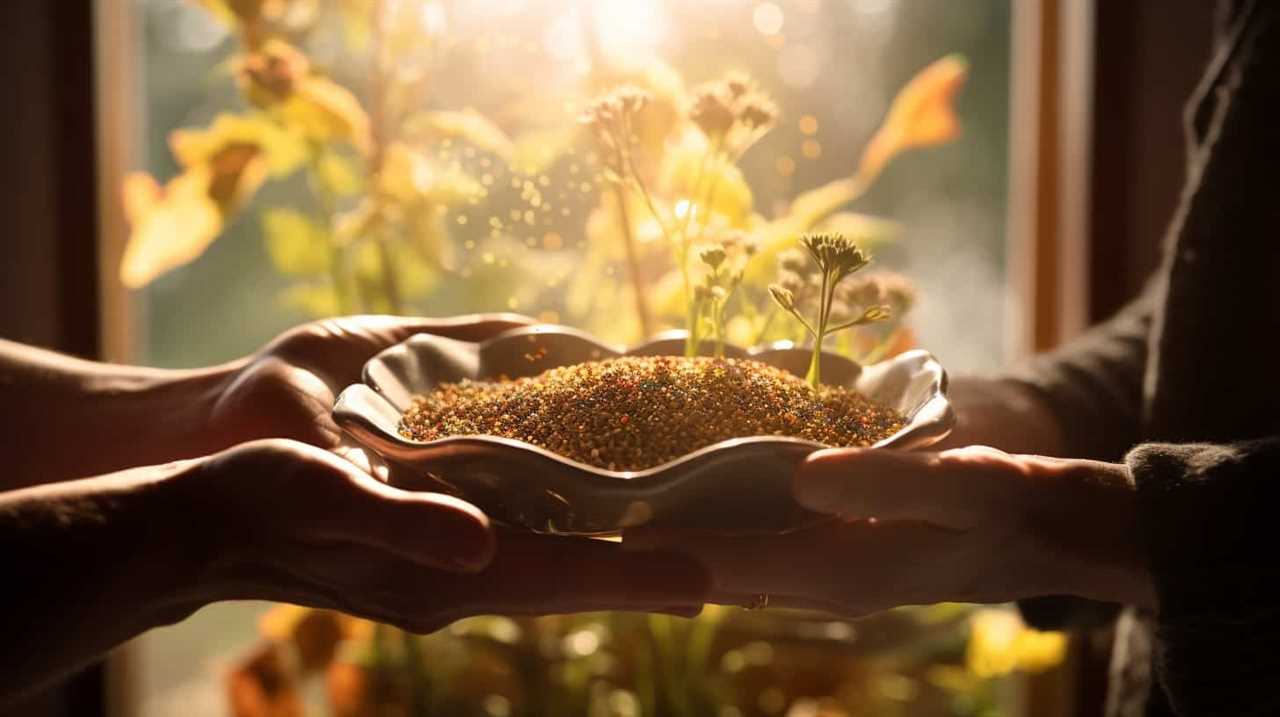
Unlock the secrets of the past and harness the potential of chia seeds to enhance our well-being. Let’s journey back in time, and through the wisdom of our ancestors, rediscover the wonders of Salvia hispanica.
Hi, I’m Sarah. I write for Turtle Tree Seeds, a news blog that loves food – all kinds of food. But especially bacon, chocolate, and veggies. We’re on a mission to show the world that you can enjoy all of those things, even kale and brussels sprouts. Because we believe that when it comes to food, there’s no such thing as guilty pleasures. Just pleasures.
I’m also a huge fan of puns (obviously).
Historical Use of Chia Seeds
Past Influence of Tiny Powerhouse Seeds on Diets
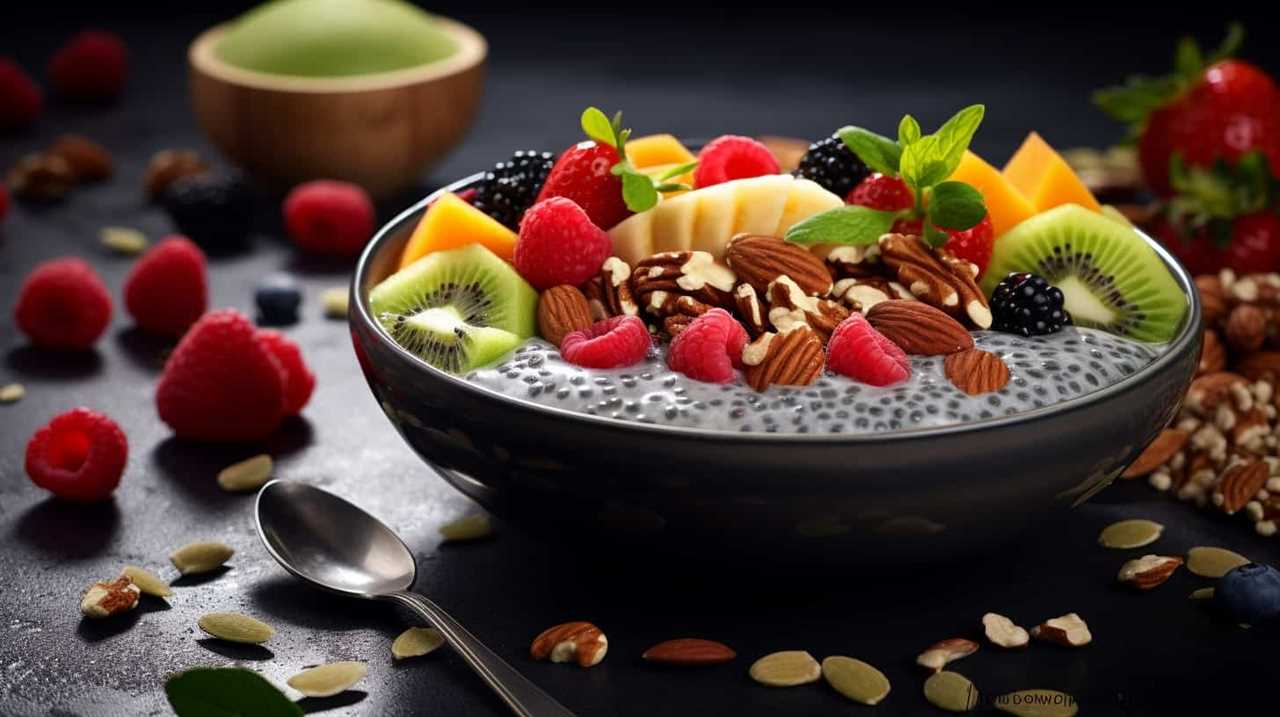
We have discovered an abundance of nutritional benefits in small but powerful seeds. These tiny wonders serve as nutritional superheroes, influencing dietary patterns from ancient times to modern settings. Chia seeds, specifically, have been essential as a staple food, packed with essential nutrients, throughout various historical epochs up to the present day.
In this article, we’ll explore the past influence of these remarkable seeds on our diets and uncover the many benefits they offer.
So grab a seat and prepare to be amazed by the incredible impact of chia seeds on our health and well-being. Let’s dive in!
Key Takeaways
- Chia seeds have been used for centuries and were highly valued by ancient civilizations for their nutritional benefits and culinary uses.
- Chia seeds are a rich source of omega-3 fatty acids, fiber, antioxidants, and plant-based protein, making them a nutritious addition to modern diets.
- Chia seeds can be easily incorporated into various dishes and are widely available, offering a convenient way to enhance overall well-being and support a healthy lifestyle.
- Chia seeds have gained popularity as a versatile ingredient in gluten-free and vegan recipes, as well as in the food industry as a natural thickening agent.
Origins of Chia Seeds
We have discovered the fascinating origins of chia seeds, tracing their journey from ancient civilizations to modern diets. Chia seeds have been used for centuries, with evidence of their consumption dating back to the Aztecs and Mayans. These civilizations recognized the nutritional benefits of chia seeds and incorporated them into their diets as a natural remedy for various ailments.
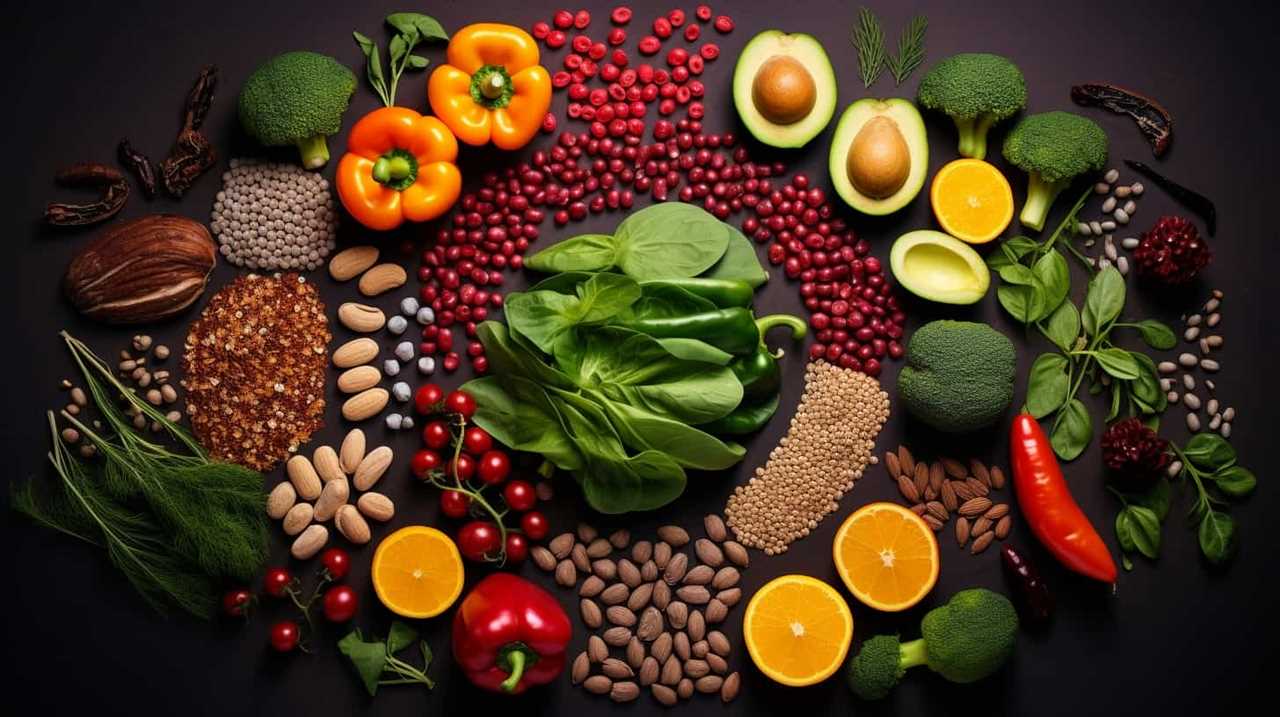
Today, chia seeds continue to be a popular superfood, touted for their high omega-3 fatty acid content, fiber, and protein. They’ve gained significant popularity in popular culture, with chia seeds being featured in numerous recipes, smoothies, and even as a topping for salads and desserts.
Chia seeds have also been recognized for their potential health benefits, including weight loss, improved digestion, and reduced inflammation. As more research is conducted, the ancient wisdom behind chia seeds as a natural remedy is being validated, making them an excellent addition to a healthy and balanced diet.
Ancient Cultures and Chia Seeds
The ancient utilization of chia seeds by various cultures highlights their enduring impact on diets. These tiny seeds were highly valued for their health benefits and culinary uses.
Here are three ways ancient cultures incorporated chia seeds into their diets:
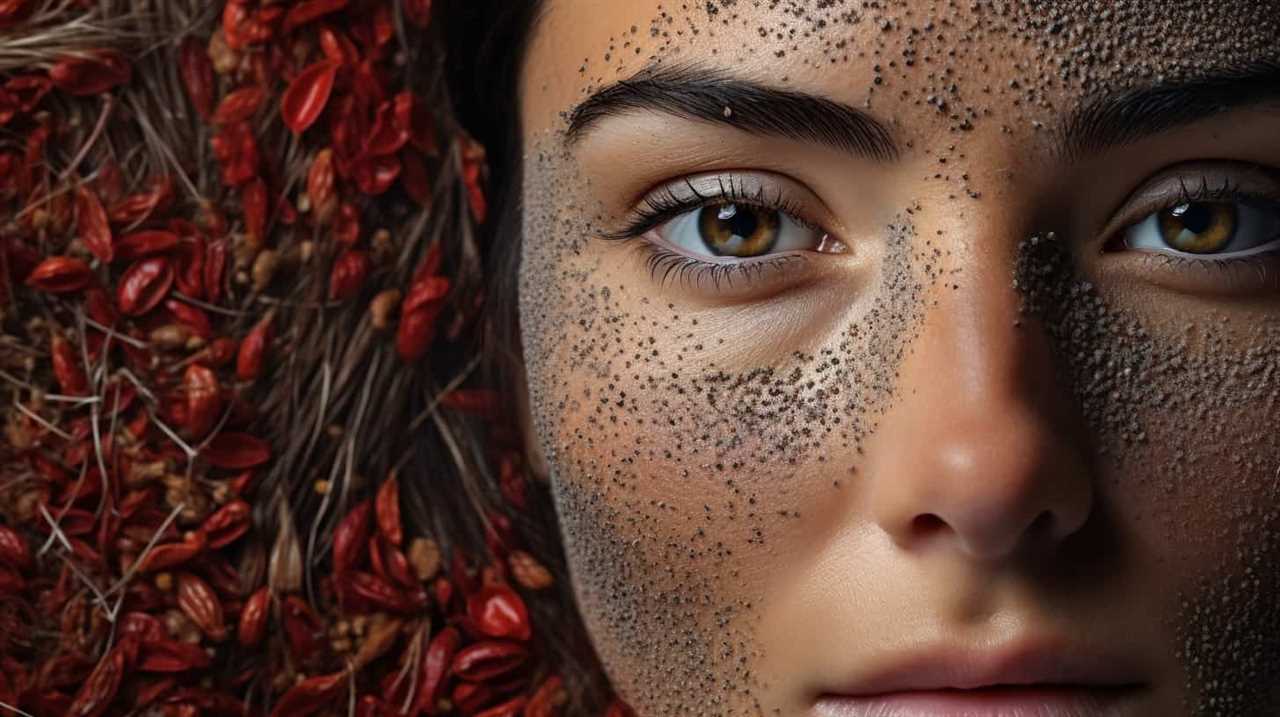
- Aztecs: The Aztecs consumed chia seeds for their high nutritional value. They believed that chia seeds provided sustained energy and strength. Chia seeds were often mixed with water or juice to create a refreshing beverage called ‘chia fresca.’
- Mayans: Chia seeds held great importance in Mayan culture and were used in religious rituals. They were also used as a source of sustenance during long journeys. Mayans ground chia seeds into flour and added it to bread, tortillas, and porridge.
- Tarahumara: The Tarahumara people, known for their long-distance running abilities, relied on chia seeds for endurance. They’d mix chia seeds with water and lemon juice to create a gel-like substance called ‘iskiate,’ which provided hydration and sustained energy during their runs.
Today, we can still enjoy the health benefits and culinary versatility of chia seeds in our own diets.
Chia Seeds as a Staple Food
Continuing from the previous subtopic, chia seeds have become a staple food in many diets. These tiny seeds pack a powerful nutritional punch and are incredibly versatile, making them a popular choice for those looking to incorporate more plant-based foods into their meals. Chia seeds are rich in fiber, omega-3 fatty acids, and antioxidants, which have been linked to numerous health benefits, including improved digestion and heart health.
To make it easier for you to incorporate chia seeds into your diet, here are some simple and delicious chia seed recipes:
| Recipe | Ingredients |
|---|---|
| Chia Pudding | Chia seeds, milk (dairy or plant-based), sweetener of choice, vanilla extract |
| Chia Smoothie | Chia seeds, fresh or frozen fruits, yogurt or milk, sweetener (optional) |
| Chia Energy Balls | Chia seeds, dates, nuts of choice, cocoa powder, coconut flakes |
In addition to their nutritional value, chia seeds have also been associated with weight loss. This may be due to their high fiber content, which can help you feel fuller for longer and reduce overall calorie intake. However, it’s important to note that chia seeds alone are not a magical weight loss solution, and should be consumed as part of a balanced diet and healthy lifestyle.
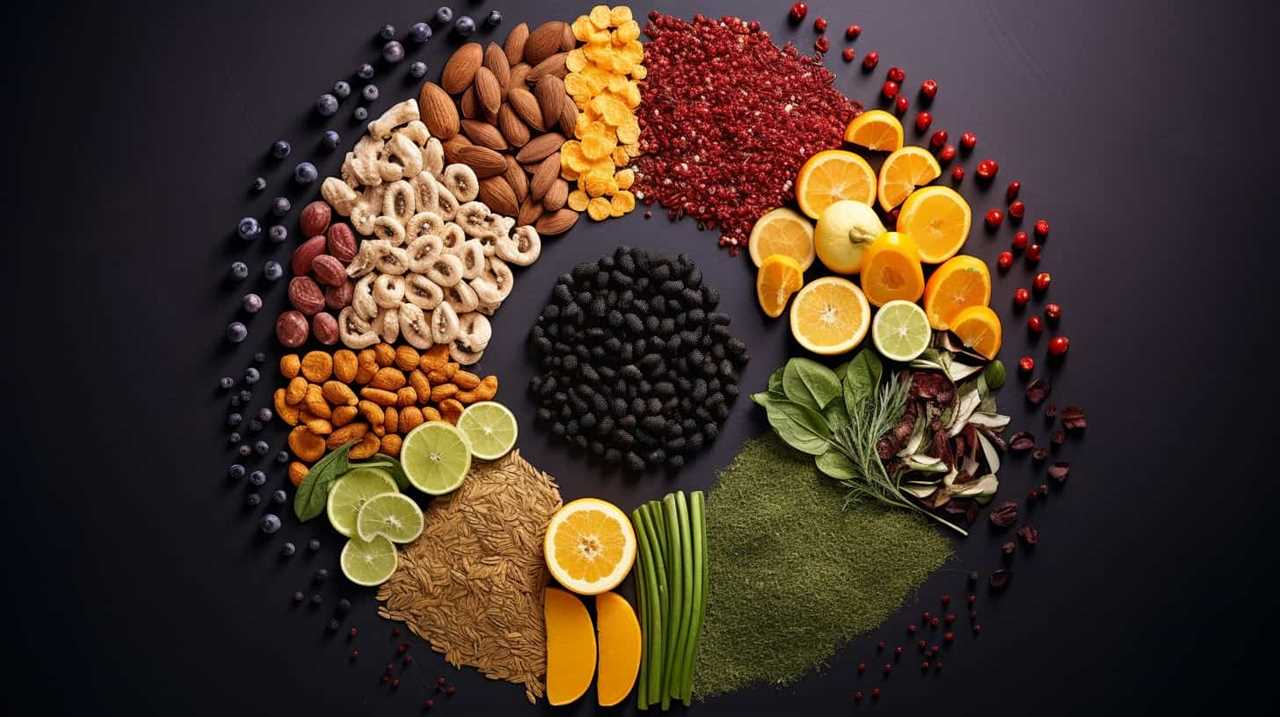
Nutritional Benefits of Chia Seeds
Chia seeds offer a multitude of nutritional benefits. These tiny powerhouses are packed with essential nutrients that can support overall health and well-being. Here are some of the key health benefits of chia seeds:
- Rich in Omega-3 Fatty Acids: Chia seeds are one of the richest plant-based sources of omega-3 fatty acids, which are essential for heart health and brain function.
- High in Fiber: With a high fiber content, chia seeds can support digestive health, help regulate blood sugar levels, and promote satiety, aiding in weight management.
- Loaded with Antioxidants: Chia seeds are rich in antioxidants that help protect the body against free radicals, reducing the risk of chronic diseases.
Beyond their health benefits, chia seeds also have various culinary uses. They can be added to smoothies, oatmeal, yogurt, or baked goods for an extra nutritional boost. They can also be used as an egg substitute in vegan baking. Incorporating chia seeds into your diet is an easy and delicious way to enhance your overall well-being.
Chia Seeds in Modern Diets
As we explore the role of chia seeds in modern diets, let’s delve into their versatility and adaptability as a nutritious addition to a wide range of culinary creations.
Incorporating chia seeds into recipes is a fantastic way to boost the nutritional value of your meals. These tiny seeds are packed with essential nutrients like fiber, omega-3 fatty acids, and antioxidants. They also provide a good amount of plant-based protein, making them an excellent choice for vegans and vegetarians looking to meet their protein needs.
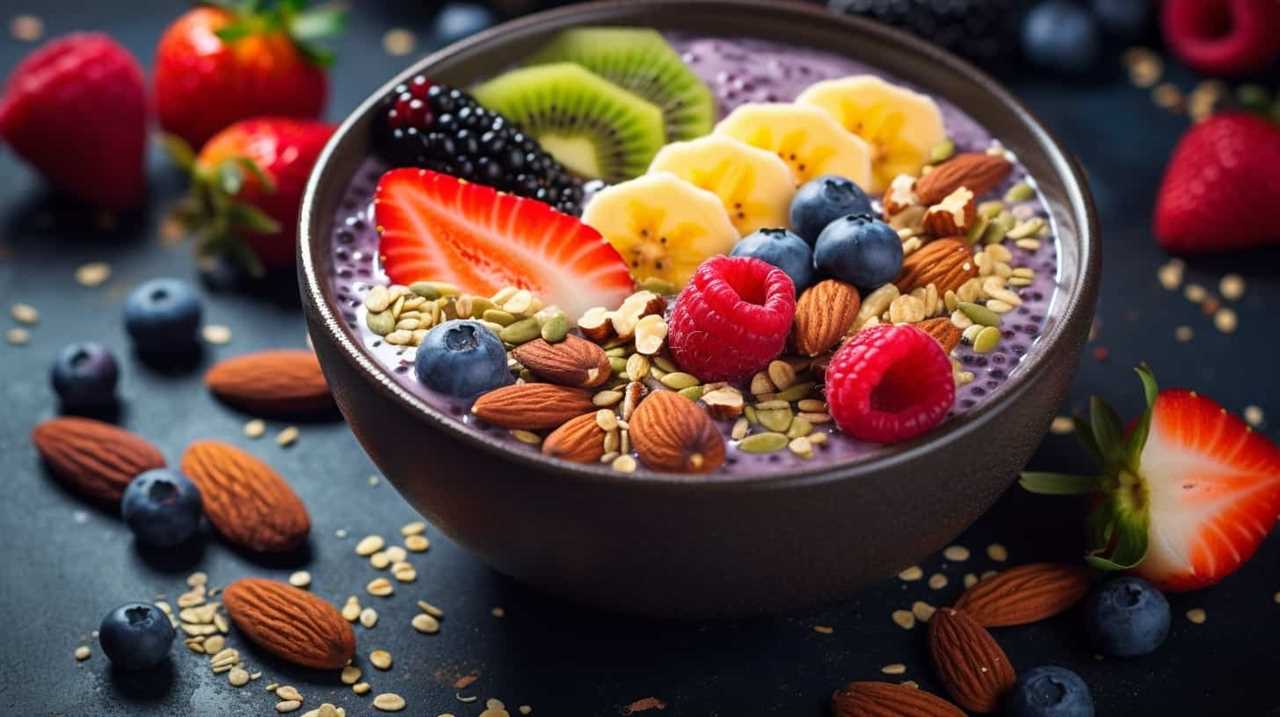
Chia seeds can be used in various ways, such as adding them to smoothies, oatmeal, yogurt, or even using them as an egg substitute in baking. Their gel-like texture when soaked in liquid also makes them a popular ingredient in puddings and overnight oats.
With their impressive nutritional profile and versatility, chia seeds are a valuable addition to any modern diet.
Frequently Asked Questions
Are There Any Potential Side Effects or Allergies Associated With Consuming Chia Seeds?
There may be potential side effects or allergies associated with consuming chia seeds. It is important to be aware of these risks and consult with a healthcare professional if you have any concerns.
How Can Chia Seeds Be Incorporated Into Different Types of Diets, Such as Vegetarian or Gluten-Free Diets?
Incorporating chia seeds into vegetarian and gluten-free diets is easy with creative recipes and meal ideas. Chia seeds offer numerous benefits for overall health and well-being, making them a valuable addition to any diet.
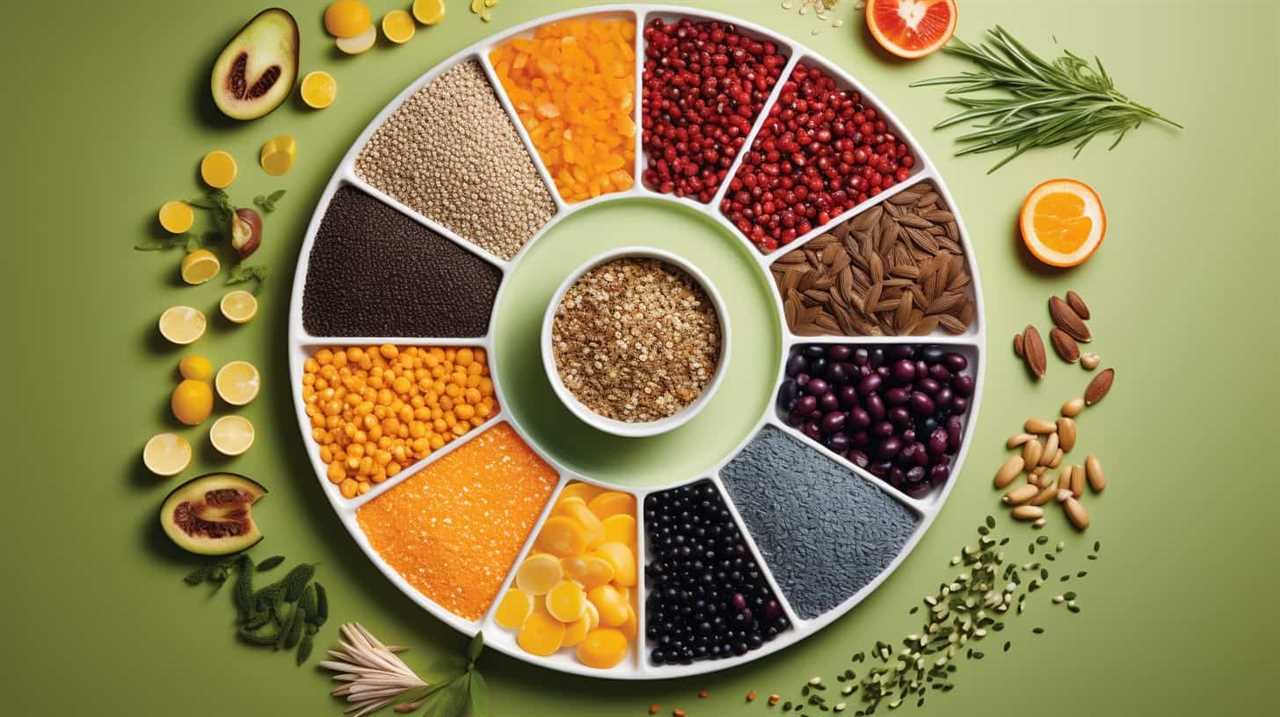
Can Chia Seeds Be Used as a Substitute for Other Ingredients in Baking or Cooking?
Sure, chia seeds can be used as a substitute in recipes. They work well as an egg replacement in baking, binding ingredients together. They are a nutritious option to add to various diets.
Are There Any Specific Storage Requirements for Chia Seeds to Maintain Their Nutritional Value?
To maintain the nutritional value of chia seeds, there are specific storage requirements to consider. It is important to store them in a cool, dry place, away from sunlight and moisture. This helps to preserve their beneficial properties and extend their shelf life.
Can Chia Seeds Help With Weight Loss or Management, and if So, How Should They Be Consumed for Optimal Results?
To maximize weight loss benefits, chia seeds can be consumed in various ways. Soaking them in water or adding them to smoothies and yogurt are popular methods. These tiny powerhouse seeds can be a helpful addition to a balanced diet.
Conclusion
In conclusion, it’s quite amusing to think that these tiny chia seeds, once revered by ancient civilizations, have become a trendy superfood in modern diets.
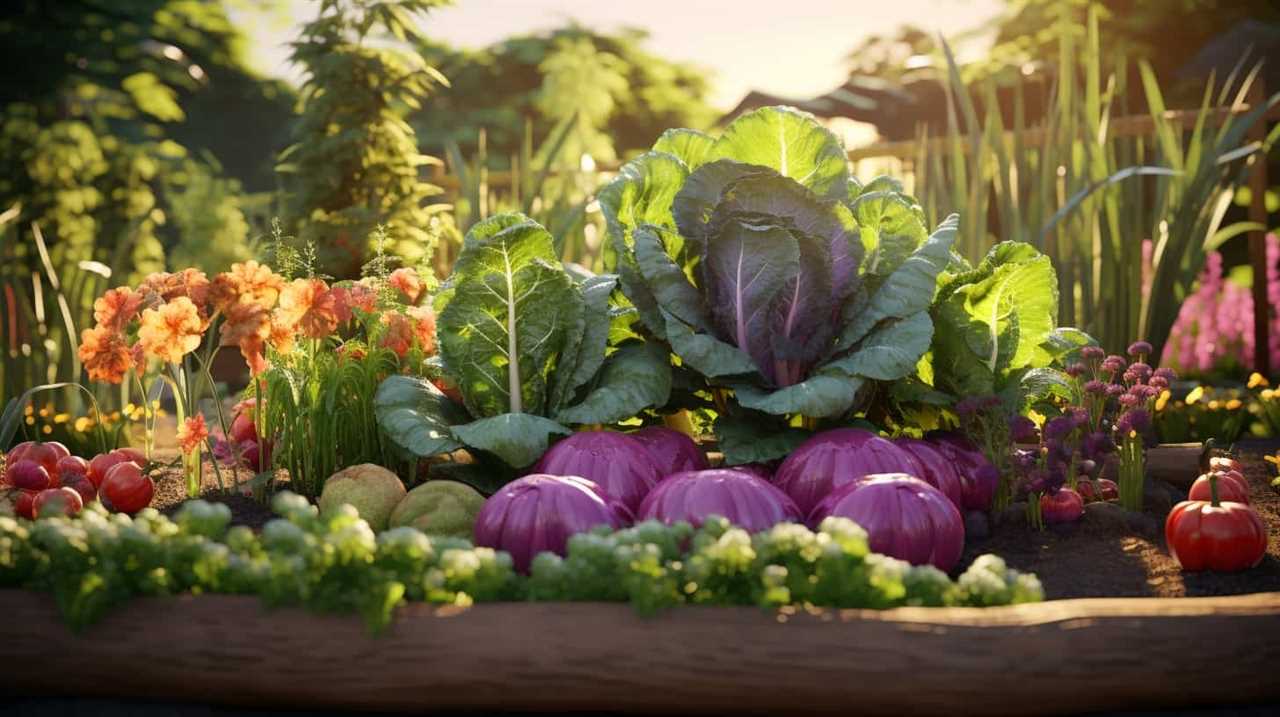
Despite their size, these powerhouse seeds have managed to leave a lasting impact on our culinary traditions.
With their impressive nutritional profile, it’s no wonder that chia seeds have gained popularity and continue to be incorporated into various dishes.
So next time you sprinkle some chia seeds on your yogurt or blend them into your smoothie, remember the rich history behind these little wonders.
Hi, I’m Sarah. I write for Turtle Tree Seeds, a news blog that loves food – all kinds of food. But especially bacon, chocolate, and veggies. We’re on a mission to show the world that you can enjoy all of those things, even kale and brussels sprouts. Because we believe that when it comes to food, there’s no such thing as guilty pleasures. Just pleasures.
I’m also a huge fan of puns (obviously).
-
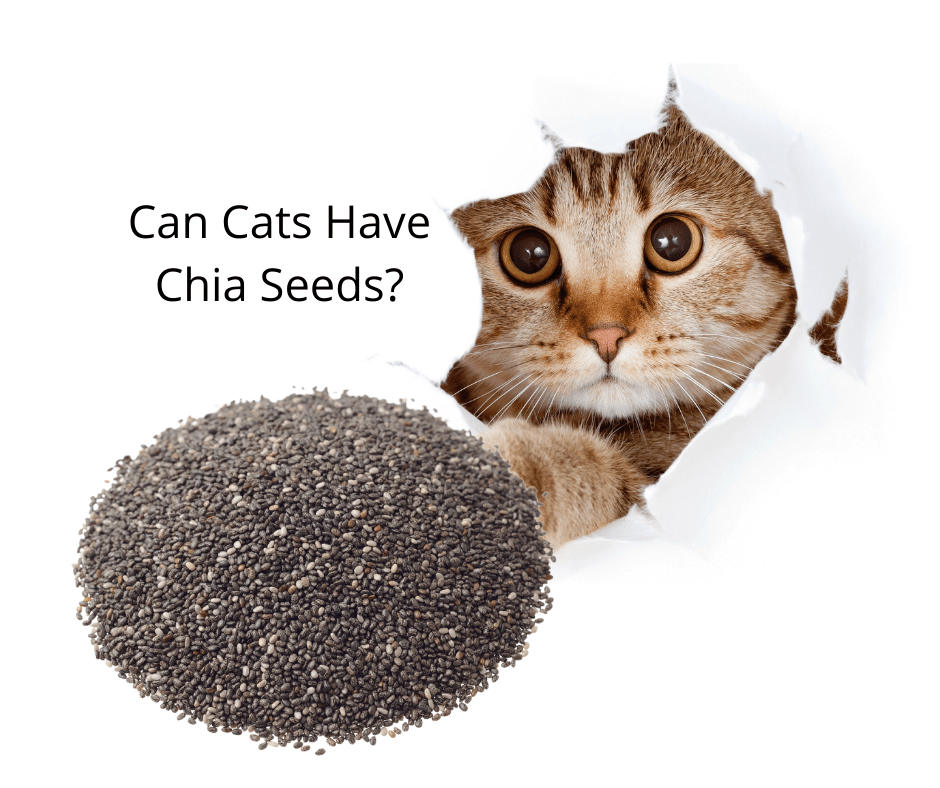
 Chia Seeds2 months ago
Chia Seeds2 months agoCan Cats Have Chia Seeds?
-

 Chia Seeds2 months ago
Chia Seeds2 months agoHow Do Chia Seeds Go Bad?
-

 Chia Seeds2 months ago
Chia Seeds2 months agoDo Chia Seeds Make You Poop?
-

 Health Risks and Allergies Related to Chia Seeds6 months ago
Health Risks and Allergies Related to Chia Seeds6 months agoWhy Do Chia Seeds Gel
-

 Chia Seeds2 months ago
Chia Seeds2 months agoHow to Use Chia Seeds For Weight Loss
-

 Chia Seeds and Digestive Health3 months ago
Chia Seeds and Digestive Health3 months agoWhy Are Chia Seeds Beneficial For Gut Health?
-
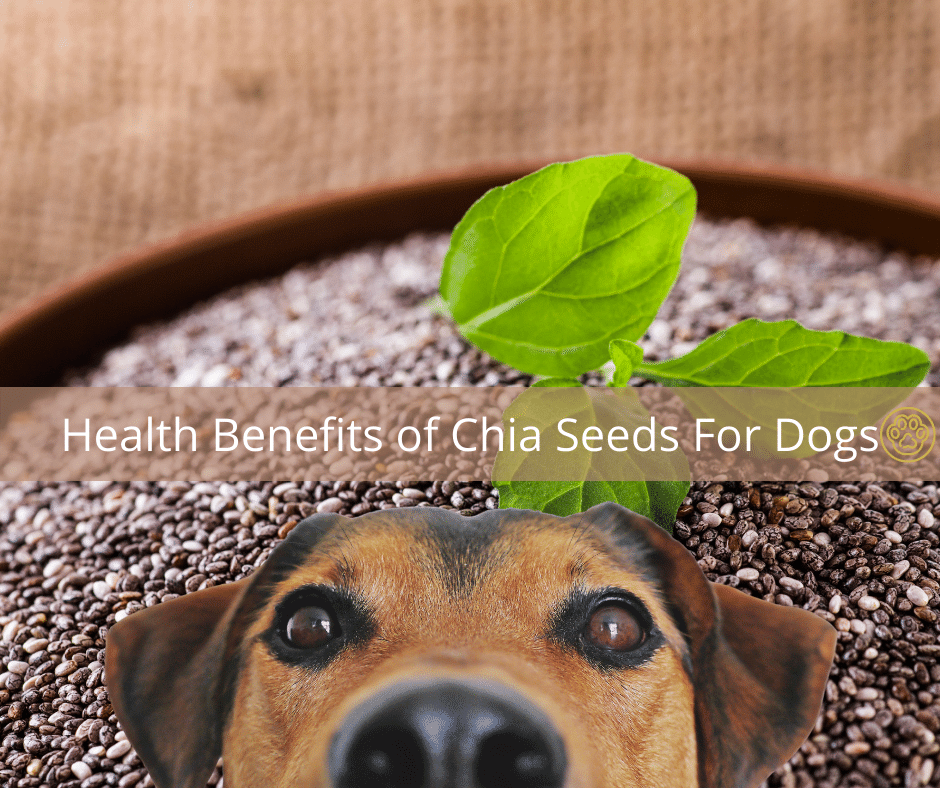
 Chia Seeds2 months ago
Chia Seeds2 months agoHealth Benefits of Chia Seeds For Dogs
-

 Beginners Guides2 months ago
Beginners Guides2 months agoWhat is Celery Juice Powder?


